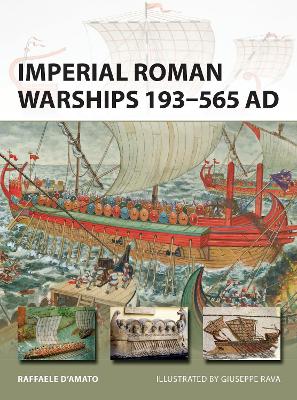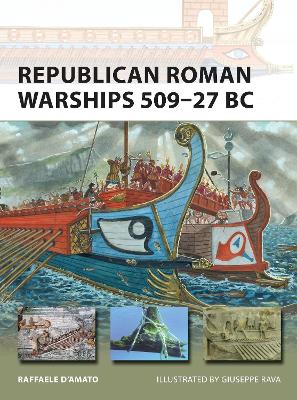New Vanguard
1 primary work • 2 total works
Book 244
The period of relative peace enjoyed by the Roman Empire in its first two centuries ended with the Marcomannic Wars. The following centuries saw near-constant warfare, which brought new challenges for the Roman Navy. It was now not just patrolling the Mediterranean but also fighting against invaders with real naval skill such as Genseric and his Vandals.
With research from newly discovered shipwrecks and archaeological finds as well as the rich contemporary source material, this study examines the equipment and tactics used by the navy and the battles they fought in this tumultuous period, which includes the fall of Rome and the resurgence of the Eastern Empire under Justinian the Great.
Using spectacular illustrations, carefully researched ship profiles, and maps, this third volume in Osprey's Roman Warships miniseries charts the ultimate evolution of the Roman fleet in one of the most fascinating periods of its history.
With research from newly discovered shipwrecks and archaeological finds as well as the rich contemporary source material, this study examines the equipment and tactics used by the navy and the battles they fought in this tumultuous period, which includes the fall of Rome and the resurgence of the Eastern Empire under Justinian the Great.
Using spectacular illustrations, carefully researched ship profiles, and maps, this third volume in Osprey's Roman Warships miniseries charts the ultimate evolution of the Roman fleet in one of the most fascinating periods of its history.
The birth of the mighty Roman Navy was anchored in the Romans' extraordinary ability to absorb and perfect the technology of other states and empires. This is the story of the design, development and operation of the Republican Roman warship in the age of the conquest of the Mediterranean, from the first Roman naval adventure of 394 BC and the Punic Wars, to Pompey's operations against the Cilician Pirates and Caesar's victorious naval campaigns in Armorica, concluding with the consolidation of the Mediterranean Sea as Mare Nostrum with the battle of Actium in 31 BC. Archaeological photography, including those of exciting new finds, such as the Roman warship rosta (rams) found in the Aegates Islands, accompany lavish artistic reconstructions in illustrating the ships of the first Roman navy.

